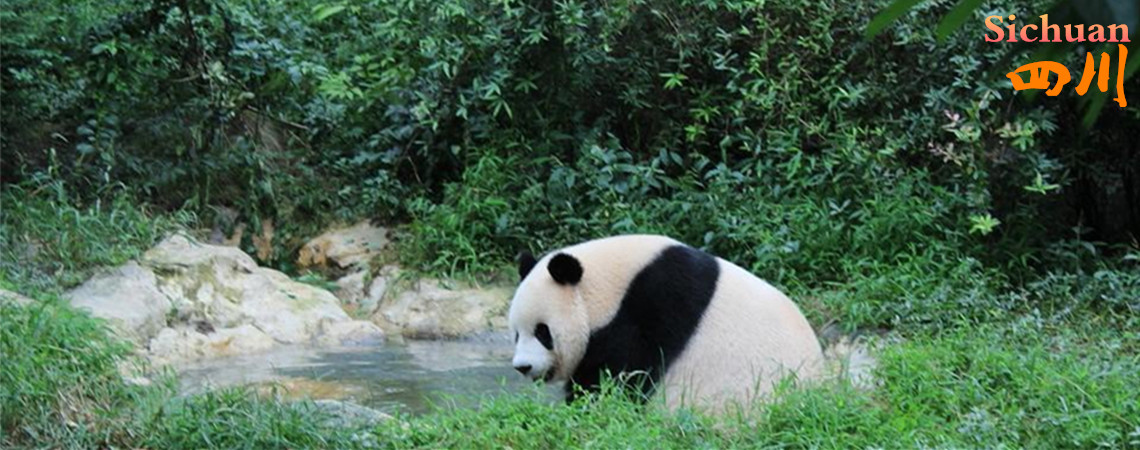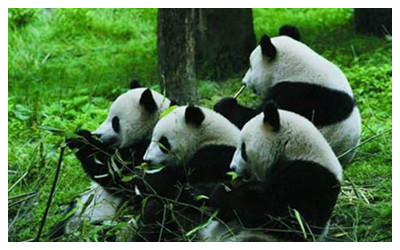Skype: neodalle-travel
Tel: +86 135 7447 2266
E-mail: sales@visitaroundchina.com

Wolong National Nature Reserve is well known as the home of the giant pandas. Located in the southwest of Wenchuan County, it is 130km from Chengdu, the capital of Sichuan Province. Wolong National Nature Reserve is the core part of Sichuan Giant Panda Sanctuaries, one of the World Natural Heritages in China. Completed in 1963, Wolong National Natural Reserve is the earliest, largest and best-known panda reserve in China. It was placed on UNESCO Man and Biosphere Reserve Network in 1980.
What to see?
Apart from the great number of rare animals and plants, this natural reserve also boasts enthralling sceneries combining with mountains, waters, forests, caves. With the warm and humid climate favorable to bamboos, pandas' favorite food, it is an ideal place for the living and reproduction of giant pandas.
Prior to the catastrophic Wenchuan Earthquake in 2008, when it came to seeing pandas, people thought of Wolong National Nature Reserve, which is acclaimed as the Hometown of Giant Pandas, the National Treasure of China. More than one hundred pandas once inhabited there, accounting for over 10% of the nation's total.
Wolong National Natural Reserve is also widely known as a "Bio-gene Bank" because of the wide variety of animals and plants, including 56 rare and endangered species such as red panda, golden monkey, white-lipped deer and precious plants such as yew and beech.
Shenshuping Panda Center
Unfortunately, the Hetaoping Panda Center of Wolong Giant Panda Nature Reserve was badly destroyed by the Wenchuan Earthquake and most pandas were relocated to Bifengxia Base of China Panda Protection and Research Center. Sponsored by the Hong Kong Special Administrative Region, a new panda center was built in Shenshuping of Gengda Town in the reserve and put into use since Oct. 30, 2012. From then on, pandas were transferred to their new home in batches. On May 11, 2016, Shenshuping Panda Center began to receive visitors. 74 captive pandas are kept there.
 After eight years of desolation, the reserve now gains a new lease of life. Covering an area of 371 acres (about 150 hectares), Shengshuping Base consists of 59 colony houses. Hi-tech is commonplace in the Research Center, which is a world leader in propagating the panda species. Pandas are national treasures and also goodwill ambassadors. Visitors can take pictures with mice-like panda babies. People from all nations are welcome to adopt pandas through naming them with an accompanying donation.
After eight years of desolation, the reserve now gains a new lease of life. Covering an area of 371 acres (about 150 hectares), Shengshuping Base consists of 59 colony houses. Hi-tech is commonplace in the Research Center, which is a world leader in propagating the panda species. Pandas are national treasures and also goodwill ambassadors. Visitors can take pictures with mice-like panda babies. People from all nations are welcome to adopt pandas through naming them with an accompanying donation.
Unlike regular zoos, Wolong National Nature Reserve provides natural environment for pandas and they are not kept in cages. Therefore, while driving or walking in the reserve, you may come across cute pandas. In the reserve, there are Baby Panda Zone, Sub-adult Panda Zone, Grown-up Panda Zone, Breeding Zone, and Wildness Training Zone. You may see them walking around slowly, romping happily, eating bamboos with appetite, or climbing up the stub to present visitors a show.
Besides those cute creatures, the natural scene itself in Wolong National Nature Reserve is a delight for visitors. Visitors will see luxuriant bamboo groves here and there. What also makes Wolong special is that it is more natural and less commercialized. Without huge crowds of tourists, all that the reserve has are undulating hills, murmuring streams, fresh air, adorable pandas, and other rare animals.
Travel Tips
Add: Wenchuan County, Sichuan Province,China
Entrance fee for the reserve: CNY 15; Panda Museum: CNY 20; Shenshuping Panda Center: CNY 60
Opening Hours: 09:00-17:00
Visiting Hours: half day
How to get there: Due to the devastating earthquake, the road is still not very good now
1. From Chengdu, visitors can take metro line 2 to Chadianzi Coach Station in Jinniu District. Then transfer to the bus bound for Xiaojin County or Wolong Town and get off at Wolong. The bus ride usually takes three hours.
2. From Dujiangyan, visitors can take a bus at Dujiangyan Coach Station to Wolong. It costs CNY 21 and takes about two hours.
 Ask Questions ?
Ask Questions ?